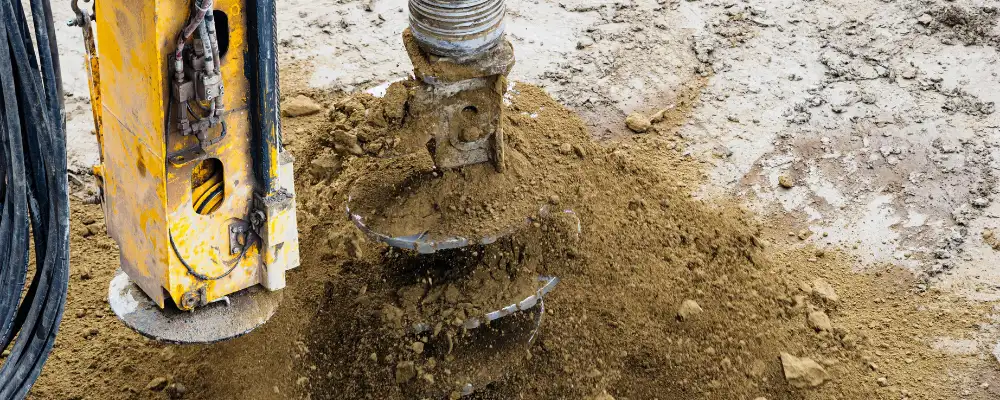Every construction, from a private house to a soaring tower, depends on the soil on which it is built. When the soil is weak, even the best design may fail. This makes soil mechanics a crucial aspect of civil engineering. It helps builders understand how soil reacts to weight and climatic changes over time.
This information will enable the engineer to design buildings that are safe from many hazards and that will stand strong for years. Therefore, soil testing is the first step in the construction procedure. It allows engineers to make the right decision and avoid costly mistakes later. Keep reading to know the ins and outs of soil mechanics in construction!
Soil Mechanics: A Brief Overview
Soil mechanics is a branch of engineering that studies the physical and mechanical properties of soil and its behavior under various stresses and environmental conditions. It applies principles of mechanics, physics, and mathematics to analyze the behavior of soil as an engineering material, particularly in the context of foundations, slopes, and other geotechnical structures.
In simple terms, soil mechanics examines how soil behaves under various conditions. It tells you how soil would react to various imposed forces, such as weight, water, or movement. It also tells you how much load soil can take, how it changes volume with moisture movement, and how much it can compress within a given time. Engineers use this science to prepare foundations and other supporting structures.
For instance, before they decide to build a bridge or a building, they want to test the soil beneath for its strength. If the soil is too soft, the engineer would have to drill further down and either bring up some hard-headed rocks or strengthen the soil in another way.
Soil Mechanics: Why It Matters in Construction

No matter how high-quality your construction materials are, the quality of soil determines the success or failure of a project. Be it a small space or large structure, studying the soil beneath is a must.
1. Set a Strong and Stable Foundation
Since every building stands on soil, it is crucial to determine if that soil can support the load. A thorough soil investigation enables you to establish a foundation that won’t crack, sink, or shift, thereby avoiding structural failures down the line.
2. Cost-Effective Design
By analysing the soil type and its properties during the planning phase, engineers can design appropriate foundations and prevent overdesigning. This cuts down material waste and keeps unnecessary costs in check.
3. Spot Risks Beforehand
Before the construction begins, engineers should study the soil to predict problems like erosion or ground movement. If any potential risks are found, safety measures can be taken earlier to safeguard the building from mishappenings.
4. Improve Safety Measures
Examining the quality and type of soil, engineers can distribute loads better and plan techniques accordingly. Furthermore, structures can be protected during natural challenges like floods, earthquakes, or anything similar.
5. Select Ideal Construction Materials
The material selection and construction methods can’t be random. A thorough soil study helps engineers decide what kind of material suits the foundation type and solutions that are suitable for specific ground conditions.
6. Assess Site Suitability
Before beginning a big construction project, soil mechanics helps to decide whether a site is suitable for the planned structure. If everything is good, construction shall begin. Otherwise, you can prevent future risks and choose the most suitable location for construction.
To save time, money, and precious lives, don’t miss out on soil mechanics.
Types of Soils and Their Properties
In civil engineering, it is essential to know the different types of soils. Because each behaves differently when subjected to load, moisture, or environmental changes. The most common types and their individual properties are discussed below.
Clayey Soil
Clay consists of very fine-grained particles, which makes it feel smooth when touched. It holds water for a long time. However, clay shrinks when it dries and swells when it gets wet. The plain clay might not be suitable for heavy construction, so it should be treated before use.
Sandy Soil
Sandy soil is composed of coarse particles and lacks cohesion due to its high permeability. It drains water quickly, which reduces the risk of waterlogging. As it doesn’t retain moisture and has weak strength in a loose state, it might not be able to bear heavy loads effectively.
Silty Soil
Silt soil sits between sand and clay in terms of texture. It holds water due to its poor drainage. Also feels soft and slippery when wet, especially in cold climates. To support buildings or any infrastructure, it needs to be improve soil stabilization first.
Gravelly Soil
Gravel is coarse particles with very high permeability and a non-cohesive nature. It provides excellent drainage and has less potential to shrink or swell. The best part is that gravel is stable under heavy loads, making it ideal for road construction, base layers, and other applications. Anyhow, it requires mixing with finer soils for the foundation, as it has a loose composition.
Peaty Soil
Peaty soil is organic, as it has more decomposed materials. It has a dark and spongy texture. Typically, it is highly compressible and holds a large amount of water. This soil settlement is more under structural loads due to its low bearing capacity. Additionally, it is susceptible to oxidation, which can lead to further volume loss. All these factors make peaty soil not ideal for foundations unless it is treated with deep soil mixing.
Core Concepts in Soil Mechanics
Engineers employ several core concepts and conduct laboratory tests to assess soil performance and make sure structures are built on safe and stable sites.
Soil Structure: It refers to how individual soil particles are arranged and bonded. Typically, densely packed soils offer higher strength and lower compressibility, whereas loosely packed soils are weaker, with a greater likelihood of shifting or settling.
Permeability: This measures how easily water flows through soil. For instance, sandy soils with larger particles are highly permeable and drain quickly. On the other hand, clayey soils have very low permeability, which allows them to retain water.
Compressibility: It is the tendency of soil to reduce in volume when subjected to loads. Highly compressible soils, such as clay, may settle unevenly and cause cracks or tilt in buildings if not addressed through proper design improvements.
Shear Strength: It refers to the ability to resist sliding or getting deformed when pressure is applied. Soil with lower shear strength may lead to serious issues, such as landslides or the collapse of structures.
Soil Classification: Categorised based on size and texture, such as clay, sand, or silt. Knowing the type helps engineers understand how it will behave under pressure and make the right construction decisions.
Bearing Capacity: This refers to the maximum amount of weight that the soil can support per unit area. It should be accurately estimated, especially when building foundations for multistory buildings or heavy structures. If ignored, it may lead to structural failure.
Effective Soil Tests: Engineers conduct laboratory tests and field tests, such as the cone penetration test, Proctor compaction test, and plate load test, to determine the properties of soil.
Application of Soil Mechanics in Construction
Soil mechanics is applied in different areas of construction:
Foundation Design
Engineers use soil information to create the proper type of foundation. For poor soil, deep foundations or pile systems can be applied.
Earth Retaining Structures
Retaining walls retain soil on slopes. Engineers work out how much pressure the soil will put on the wall.
Road and Pavement Design
With good soil, less wear and tear on roads is experienced. Poor soil can result in potholes or cracks.
Tunnel Construction
Engineers analyze the soil character before tunnel excavation to prevent collapse and control water.
Embankments and Dams
Soil analysis assists in the design of secure embankments to contain water or carry highways without failure.
Major constructions such as airports and bridges cannot be constructed without an intimate understanding of soil behaviour. Geotechnical reports are thus integrated into the planning of every major construction project.
Soil mechanics helps make these projects safer and less expensive.
Soil Mechanics: Soil Behaviour
Soil behaviour means how soil changes with time or under different conditions. It is affected by:
- Strength: Represents how well the soil can handle pressure without losing its shape. Strong soil supports any structure safely.
- Consolidation: The ground settles over time as loading is applied and gets compressed gradually.
- Permeability: Permeability is how easily water can pass through the ground.
- Deformation: The shape may change when pressure is applied to the ground. It varies depending on the type of soil and how much moisture it holds.
- Liquefaction: Under some circumstances, like earthquakes, the saturated soil can suddenly lose its strength and turn into a liquid state. This can cause buildings and roads to sink or collapse.
- Swelling and Shrinking: Some soils expand when they get wet and shrink when they dry out. This can crack or damage buildings and other structures.
Concluding Thoughts
Soil mechanics is the backbone of every construction project. It tells you how to deal with different soils and ensures safety from the ground up. Whether you are building a home, road, or tunnel, determining the nature of soil using soil mechanics leads to designing durable structures.
The more you understand what’s happening on the soil, the smarter and safer you can raise buildings above it. With new advancements and deeper insights, soil mechanics will become more important in modern construction too.

